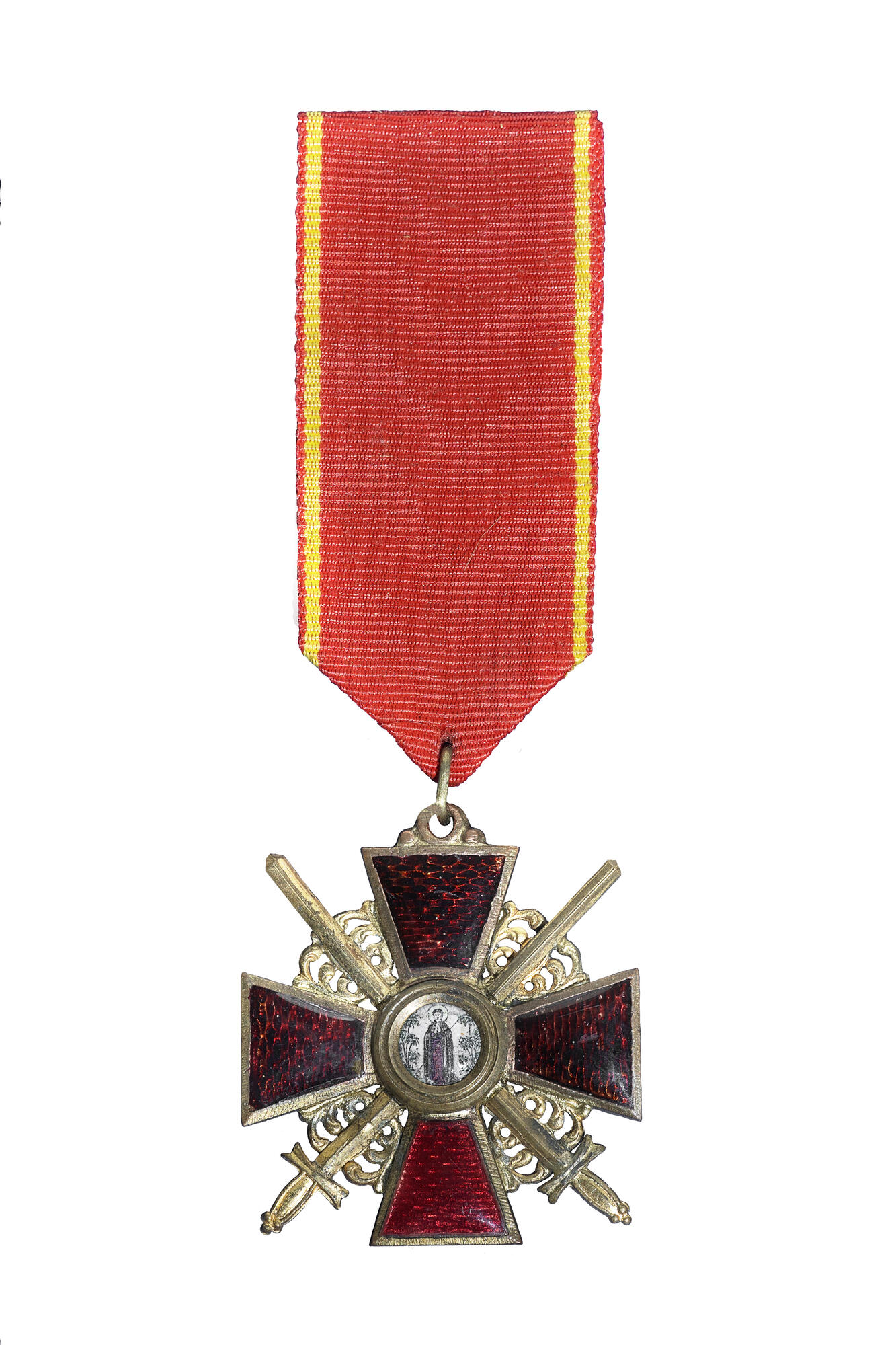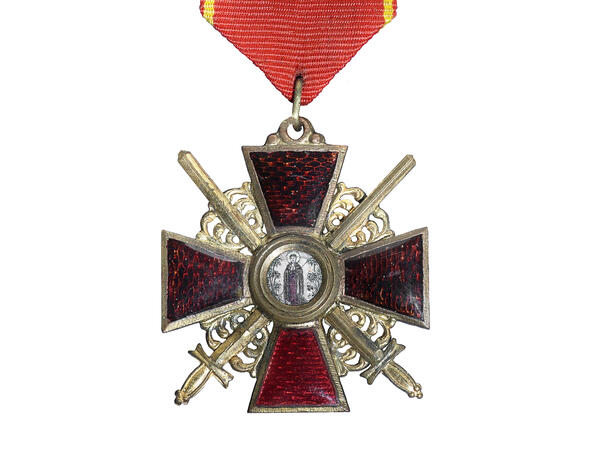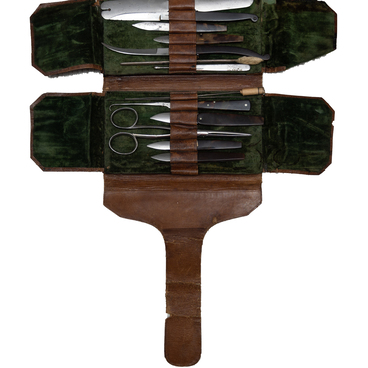The Imperial Order of St. Anna is a dynastic award of the Duchy of Holstein-Gottorp. In 1725, Peter I married his elder daughter Anna Petrovna to the Duke Karl Friedrich of Holstein-Gottorp. In 1728 she died in childbirth. And seven years later, in memory of his beloved wife, the duke established this order. Initially, it had one class, it was awarded to those who were in the rank of colonel and above.
In 1797, by the decree of the Emperor Paul I, the order was enshrined in the award system of the Russian Empire. They began to grant it to the military, civil and court officials, clergy, and foreigners.
Under the Emperor Paul I, the Order of St. Anna had three classes. The awards were made of gold. The orders of the 1st and 2nd classes were decorated with polished and rough diamonds in a silver setting. The order of the 1st class was worn at the hip, the 2nd — on the neck, and the 3rd class — on the handle of the sword. The latter was awarded for combat achievements only to junior officers.
In 1815, the order was divided into four classes. The previous 3rd class became the 4th, such an award continued to be worn on weapons. The new 3rd class of the Order of St. Anna was worn on the chest now.
In 1828, a bow was attached to the order of the 3rd class, issued for military merit: this was how it was distinguished from the award of the same class, but for civil merit. In 1829, a new statute (charter) was issued, which enshrined all the previous changes. The order of the 4th class received the inscription “For Bravery”, the awards of the 1st and 2nd classes were no longer decorated with diamonds. In addition, the orders were divided into those with and without the imperial crown. The star attributed only to the order of the 1st class.
In 1855, the bow to the order of the 3rd class for military merit was canceled, and in exchange for all classes for military distinction, except for the 4th, two crossed swords were added.
The order presented in the exhibition entered the museum funds from a private collector in 1983. This is a sample of the award that belonged to the second lieutenant of the 11th artillery brigade, a participant of the defense of Sevastopol in 1854-1855, Mikhail Antonovich Vrochensky. For 10 months of participation in the defense of the city —from November 14, 1854 to August 27, 1855 — he, among many other awards, received the Order of St. Anna of the 3rd class with swords.
The order is made in the form of a cross made of red enamel with gold stamps along its edges and a gold openwork ornament with crossed swords between the ends. Saint Anna is depicted on a white background in the center. On the reverse side of the cross there is an inscription “K. Edtsard.”
In 1797, by the decree of the Emperor Paul I, the order was enshrined in the award system of the Russian Empire. They began to grant it to the military, civil and court officials, clergy, and foreigners.
Under the Emperor Paul I, the Order of St. Anna had three classes. The awards were made of gold. The orders of the 1st and 2nd classes were decorated with polished and rough diamonds in a silver setting. The order of the 1st class was worn at the hip, the 2nd — on the neck, and the 3rd class — on the handle of the sword. The latter was awarded for combat achievements only to junior officers.
In 1815, the order was divided into four classes. The previous 3rd class became the 4th, such an award continued to be worn on weapons. The new 3rd class of the Order of St. Anna was worn on the chest now.
In 1828, a bow was attached to the order of the 3rd class, issued for military merit: this was how it was distinguished from the award of the same class, but for civil merit. In 1829, a new statute (charter) was issued, which enshrined all the previous changes. The order of the 4th class received the inscription “For Bravery”, the awards of the 1st and 2nd classes were no longer decorated with diamonds. In addition, the orders were divided into those with and without the imperial crown. The star attributed only to the order of the 1st class.
In 1855, the bow to the order of the 3rd class for military merit was canceled, and in exchange for all classes for military distinction, except for the 4th, two crossed swords were added.
The order presented in the exhibition entered the museum funds from a private collector in 1983. This is a sample of the award that belonged to the second lieutenant of the 11th artillery brigade, a participant of the defense of Sevastopol in 1854-1855, Mikhail Antonovich Vrochensky. For 10 months of participation in the defense of the city —from November 14, 1854 to August 27, 1855 — he, among many other awards, received the Order of St. Anna of the 3rd class with swords.
The order is made in the form of a cross made of red enamel with gold stamps along its edges and a gold openwork ornament with crossed swords between the ends. Saint Anna is depicted on a white background in the center. On the reverse side of the cross there is an inscription “K. Edtsard.”



